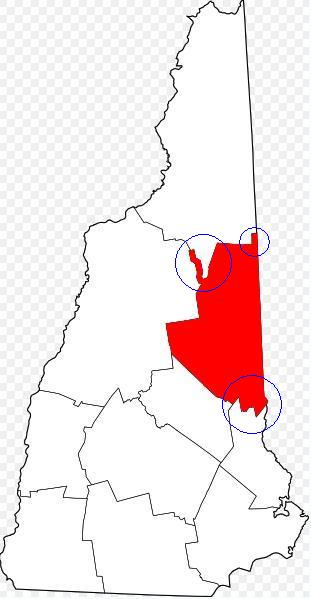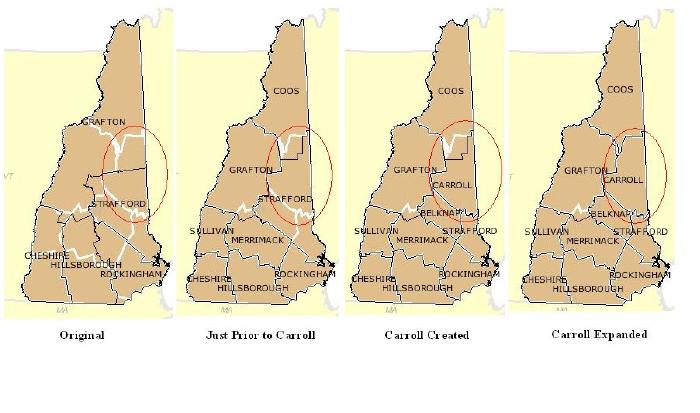County borders tend to be fairly intuitive. Often they include the irregular lines of natural phenomena such as waterfronts, riverbanks or ridges. Other times they feature straight lines drawn by surveyors. Or a combination of both.
However, some counties end up with all kinds of strange bumps, knobs, or sawtooth patterns. These can derive particularly from decisions made when carving a new county from an existing one. A town might have an affinity with a particular side of the border. A mountain pass might provide a strategic advantage. A lake might contain valuable natural resources. So government officials negotiate boundaries along any of these features, and more. Strange shapes sometimes result from the necessary compromises and tradeoffs.
Carroll County Specifically

Carroll County sits in eastern New Hampshire. The name came from Charles Carroll, the last surviving signer of the Declaration of Independence. That’s an interesting fact although it has nothing to do with today’s article. Rather, notice the anomalies within the circles I drew.
The southern circle contains a sawtooth. One tooth holds the tiny village of Union in Wakefield Township surrounded on its sides by neighboring Strafford County. The northeastern circle contains Chatham. Both of these went to Carroll at its creation, when carved from Strafford County in 1840.
The squiggle in the northwestern circle contains Crawford Notch which follows the path of the upper Saco River. This gap provides a primary passageway through the White Mountains. So that alone probably offered sufficient justification for Carroll County to want to acquire it. This happened when the borders expanded to their present configuration in 1853.
Changes Over Time

Counties commonly underwent size and border changes in the 19th Century and into the 20th Century. Of course, Carroll County provided a good case in point. Consider that New Hampshire originally had five counties. Carroll derived from one of the original five, Strafford County. Today, Strafford Counter covers just a sliver of its former self.
The map above shows how things changed in New Hampshire. It stretches from its inception, through the initial formation of Carroll County in 1840 and on to Carroll County’s expansion within its current boundaries 1853. They are all superimposed on the present county structure (the white lines).
We tend to think of county borders as fixed because we see few changes made today. However, that was not always the case in the past.

Leave a Reply